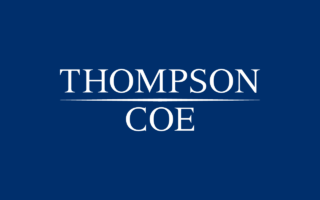Construction Defect Coverage Revisited — With A Twist: Lennar Corp. v. Great Am. Ins. Co.
Apr 10, 2006
The Fourteenth Court of Appeals in Houston recently reissued its opinion on the always interesting, always controversial issues regarding coverage for construction defect claims. Lennar Corporation is a general contractor responsible for building hundreds of homes in and around Houston in the 1990’s. On many of these homes, Lennar used a synthetic stucco product called Exterior Insulation and Finish System (“EIFS”). Lennar contends that it later discovered that EIFS was a defectively designed product that trapped water behind it, causing water damage to other portions of the home. Lennar undertook a major warranty program to replace the EIFS on all of the Lennar built homes in the Houston area and to repair any resultant water damage. All of the carriers denied coverage to Lennar, and the coverage case was resolved at the trial court on cross-motions for summary judgment.
In a substantial change from the first opinion, the court declined to make a choice-of-law analysis between Florida and Texas, opining that the state of the law on “occurrence” for construction defect claims was unsettled in both Florida and Texas — thus, no material differences existed between the two states necessitating such analysis. The majority of the opinion, then, details an extensive analysis of what constitutes an “occurrence” under Texas law with particular regard to construction defect claims. First, acknowledging that this very issue is before the Texas Supreme Court in Lamar Homes, the court determined that the structure of the policy, which includes certain business risk exclusions designed to bar coverage for the insured’s own work, required an evaluation of an “occurrence” as potentially covering construction defect claims if such defective construction was inadvertent, unintended and unexpected. The court remarked that in the insuring agreement to a general liability policy, there is no language eliminating coverage for damage to the insured’s own work — i.e., a claim sounding in contract. The court emphasized that the inquiry should be whether the damage was unintended and unexpected, not whose work was damaged when considering the “occurrence” analysis.
The court then examined the variety of business risk exclusions contained in the policies. Tracing the history of the “your work” exclusion, which contains an exception for work done by a subcontractor, the court found that the current versions of the policies demonstrate an intent by insurers to cover some defective construction. The court rejected the carriers’ argument that allowing a warranty project like the one undertaken by Lennar to be covered by the policies turned these policies into performance bonds. The court held that it was constrained to read the policies as providing the coverage, by the carriers’ own choice of language, regardless of the overlapping effect with performance bonds.
The court did, however, hold that costs to simply replace the EIFS were not covered as property damage despite the fact that the decision by Lennar to undertake such a warranty program was prudent in reducing the overall scope of its damages. Furthermore, Lennar’s overhead costs, inspection costs, personnel costs and attorneys’ fees associated with their program were not covered damage “because of” property damage to be reimbursable under the policy. Lennar’s costs to repair water damage to the homes were, however, covered so long as Lennar could apportion its costs between covered and non-covered damage as required by the policy.
Despite the generally unfavorable rulings on the occurrence question, the case ultimately resolved in favor of most of the carriers due to the court’s decision on the number of occurrences and the application of self-insured retentions. The court held that each home constituted a separate “occurrence” under the liability policies following the “cause” analysis under Texas law. Holding that Lennar’s liability stems from the fact that it built and sold homes with EIFS, the court found that Lennar was exposed to new and separate liability for each home on which EIFS was applied. With this application of “occurrence,” the existence of a $250,000 per occurrence self-insured retention under many of the Lennar policies, and the reality that no one home experienced more than or close to $250,000 in damage, no coverage was afforded under any of the policies applying a per occurrence self-insured retention. Two policies, namely, the Great American and Markel policies, have an aggregate self-insured retention of $1 million; therefore, the potential for coverage still exists under those policies.
The last significant ruling in this opinion was a determination by the court in response to Lennar’s request for bad faith damages and damages under art. 21.55 (now Texas Insurance Code art. 542.055), the “prompt payment” statute. The court rejected the bad faith claims out of hand. The court also found that the indemnity payments made by Lennar for which it sought reimbursement did not qualify as a first-party claim under the terms of Texas Insurance Code art. 21.55. The court ruled that even though Lennar made the payments itself, the thrust of the claim still remained a third-party claim in that Lennar had made payments and/or experienced expenses attributable to the damages suffered by individual homeowners. This question of the application of art. 21.55 in third-party context, whether on defense (Lamar Homes) or indemnity (Evanston v. ATOFINA), is currently pending before the Texas Supreme Court. As is the case in the “occurrence” analysis, this rather well-reasoned opinion is likely to be reviewed carefully by the supreme court justices in making their final determination.
Thompson Coe represents ICSOP in this case.







